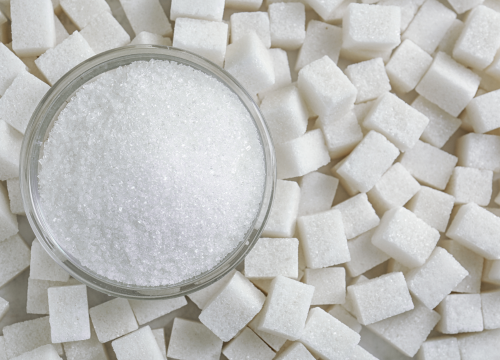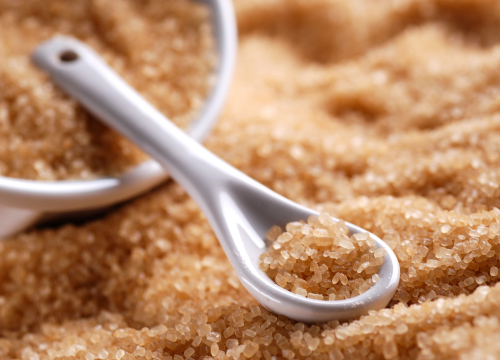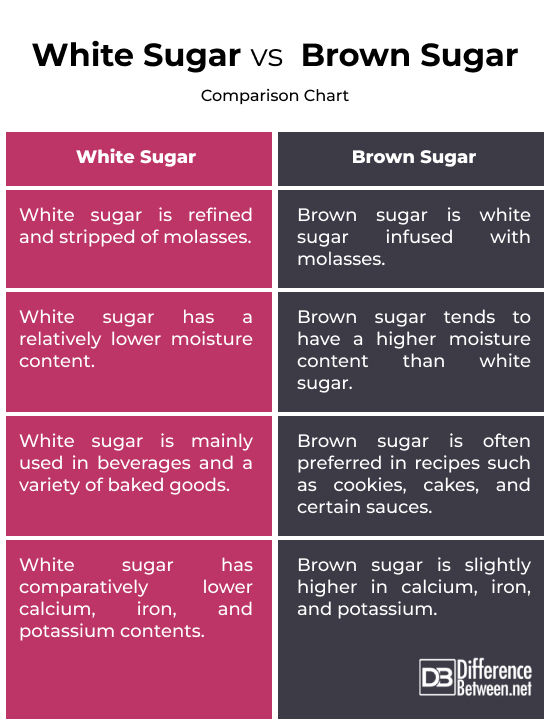Difference Between White Sugar and Brown Sugar
Which sugar should you eat—white sugar or brown sugar? There’s more to these common sugar types than you’d know. The seemingly simple choice between the two goes beyond just sweetness. These two common household staples may share some similarities, but their differences extend far beyond mere color.
In this article, we’ll delve into the fundamental differences between white and brown sugar. So, let’s get into the details and uncover the sweet secrets behind these kitchen essentials.

What is white sugar?
White sugar is also known as granulated sugar because it’s a refined sweetener derived from either sugarcane or sugar beets. Sugar is extracted from sugarcane or sugar beets through photosynthesis. It undergoes a comprehensive refining process to transform raw materials into the familiar granulated sweetener. After extraction and juicing, the sugar-rich liquid undergoes clarification to remove impurities.
Evaporation concentrates the juice, leading to crystallization and the formation of sugar crystals. Centrifugation separates these crystals, resulting in raw sugar. The refined sugar crystals are then dried to remove any remaining moisture. Finally, the sugar crystals are sized for uniformity and packed for distribution. It’s a common ingredient in a wide range of culinary applications, from baking to sweetening beverages.

What is brown sugar?
Brown sugar is another popular variation of sugar, distinct from white sugar due to its characteristic brown color and unique flavor profile. When we talk about brown sugar, we refer to light brown sugar, which is basically white sugar but with molasses. The molasses add moisture, a darker hue, and a mild caramel-like taste.
Molasses is separated from sugar crystals during the refining process to produce white sugar. The addition of molasses back into the refined white sugar creates light brown sugar, enhancing its texture, color, and flavor profile. Brown sugar is a popular choice in baking, especially for recipes that benefit from its caramel notes. It adds moisture to baked goods, making them softer, and is commonly used in recipes for cookies, cakes, and certain sauces.
Difference between White Sugar and Brown Sugar
Taste and Color
White sugar is refined and stripped of molasses, resulting in a pure white color and a neutral, sweet taste. In contrast, brown sugar contains molasses, contributing to its characteristic brown color and providing a richer, caramel-like flavor.
Production
White sugar undergoes a refining process that involves extracting juice from sugarcane or sugar beets, clarifying, crystallizing, and then refining to produce the final product. Brown sugar can be produced by either adding molasses back to refined white sugar or using less refined sugars that retain more natural molasses.
Moisture Content
Brown sugar tends to have a higher moisture content than white sugar due to the presence of molasses. This higher moisture content gives brown sugar a softer texture, making it ideal for certain baked goods that benefit from added moisture.
Culinary Applications
While both sugars are used as sweeteners, they are often chosen for different culinary applications. White sugar is versatile and is commonly used in recipes where a neutral sweetness is desired, such as in beverages and a variety of baked goods. Brown sugar, with its distinct flavor, is often preferred in recipes that benefit from its caramel notes, such as cookies, cakes, and certain sauces.
White Sugar vs. Brown Sugar: Comparison Chart

Summary
In a nutshell, the main difference between the two is the presence of molasses. White sugar is characterized by its pure white color and neutral taste. Brown sugar, on the other hand, can be produced by adding molasses to refined white sugar or using less refined sugars, which gives it a distinct brown color and a richer, caramel-like flavor. Brown sugar typically has a higher moisture content than white sugar.
FAQs
Which sugar is the healthiest?
In terms of nutritional content, both white and brown sugars provide calories without significant vitamins or minerals. Some people opt for less refined alternatives like honey or maple syrup for potential added nutritional benefits.
Why do people use brown sugar instead of white?
People use brown sugar for its distinct flavor and color. The molasses adds a subtle caramel taste, enhancing the richness of certain recipes. Additionally, the moist texture of brown sugar can be desirable in baked goods.
Can I substitute white sugar for brown sugar?
Yes, you can, but be aware that it may affect the taste and texture of your recipe. When substituting white for brown, you might miss the molasses flavor, and when substituting brown for white, the added moisture and molasses notes may alter the outcome.
Which is healthier, white sugar, brown sugar, or honey?
All sugars should be consumed in moderation, and there isn’t a significant nutritional difference between white and brown sugars. Honey, while still a sweetener, contains small amounts of vitamins and antioxidants.
What are the side effects of brown sugar?
Brown sugar doesn’t have specific side effects, but like any sugar, excessive consumption can contribute to health issues such as weight gain, tooth decay, and increased risk of chronic diseases.
Can I use brown sugar in coffee?
Yes, you can use brown sugar in coffee. It adds a distinct sweetness and a subtle caramel flavor to your drink.
Does brown sugar go bad?
Brown sugar has a longer shelf life due to its moisture content, which helps prevent it from drying out. However, it can harden over time. You can soften it by adding moisture or storing it in an airtight container.
What do you use brown sugar for?
Brown sugar is commonly used in baking recipes such as cookies, cakes, and muffins. It’s also used in certain savory dishes and sauces for added depth and sweetness.
- Difference Between Caucus and Primary - June 18, 2024
- Difference Between PPO and POS - May 30, 2024
- Difference Between RFID and NFC - May 28, 2024
Search DifferenceBetween.net :
4 Comments
Leave a Response
References :
[0]Richards, Louisa. “Brown sugar and white sugar: A comparison.” Medical News Today, 30 June 2021, www.medicalnewstoday.com/articles/325550#fruit-sugars-vs-other-sugars.
[1]Weiss, Jacqueline. “Brown Sugar vs. White Sugar: What's the Difference?” EatingWell, 11 Oct. 2022, www.eatingwell.com/article/8005813/brown-sugar-vs-white-sugar-whats-the-difference/.
[2]McCabe, Susan. “Brown Sugar vs. White Sugar: What’s the Difference?” Healthline, 7 June 2019, www.healthline.com/nutrition/brown-sugar-vs-white-sugar.
[3]Avalle, Alma. “What Is Brown Sugar—And Just How Many Kinds Are There?” Bon Appétit, 7 Sep. 2022, www.bonappetit.com/story/what-is-brown-sugar.
[4]Image credit: https://www.canva.com/photos/MAD9b1ud5Kk-granulated-sugar-in-jar-on-sugar-cubes/
[5]Image credit: https://www.canva.com/photos/MADaqtF5fhs-brown-sugar/

Good info, except- brown sugar is definitely refined. But every sugar that looks brown is not considered “brown sugar.”
do you like both …?????
how are you doin .??????
How come white sugar is white?
I heard the prepare it with a bleaching gas =P